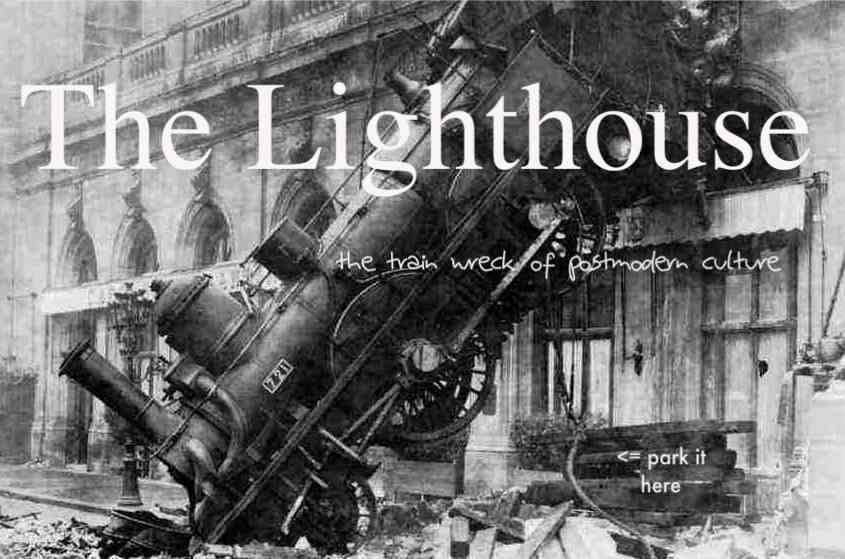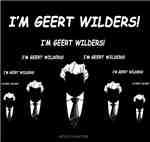- Continued from part I:
Objective Art: Toulouse-Lautrec - Paris, Athens -
A newsletter from the museum organization at the
Herakleidon: "Toulouse-Lautrec and the Belle Epoque in Paris and Athens" today proudly announces that the exhibition will be extended until 5th October!

Toulouse-Lautrec (1864-1901) is best known for his works depicting scenes from cabarets, theaters, dance halls, and brothels. These were themes that the artist lived, beginning in 1885 when he moved to Montmartre and immersed himself in its nightlife. He wanted to show life as it is, not as it should be, but this objectivity was not without empathy or humor. (...)
The newsletter goes on to explain that "at the center of this exhibition is a rare collection of approximately 100 original works on paper by Henri de Toulouse-

Lautrec, which the organizers have placed in the historical, social, artistic, and aesthetic context of the time (1800 to the beginning of the 20th century). Furthermore, there has been an effort to approximate the prevailing historical and artistic conditions of urban Athens of the same era, with the goal of revealing the influence of the French Belle Epoque on the social and artistic life of Athens and to establish a number of obvious parallels.The new acquisitions include but are not limited to the posters "Babylone d'Allemagne" 1894), "May Belfort" (1895) and "Divan Japonais" (1893) which are extremely rare and characteristic for their vibrant and distinctive colors.
The original works of Lautrec that are being exhibited (publicity posters, prints, and drawings) draw their inspiration from everyday life and entertainment. Advertisements for cabarets and periodicals, which are some of the best-known images of the great French artist, are shown next to portraits of famous actors and singers of the time, as well as sketches and caricatures. The works of Lautrec are accompanied by appropriate passages from French literature, photographs, and other objects, in order to help the viewer better understand the atmosphere of that time.

This parallel between the Belle Epoque in Paris and the corresponding one in Athens is drawn in order to present the apparent influence of the first on the second. The urban way of life and the means of entertainment in Greece during the last two decades of the 19th century have been re-created with the help of rare archival material, mainly from the collections of the Hellenic Literary and Historical Archives (E.L.I.A.), the Benaki Museum Photographic Archive, Alpha Bank and Mr. Petros Vergos.
The extension will include further works from the Petros Vergos collection as well as photographs and material from Mr. J.Spandonis. Publicity posters, often created by important Greek artists such as Gyzis and Galanos, calendar and journal covers, photographs and postcards, theatrical programs with emphasis on French repertoire, and literary passages invite the visitor to become acquainted with the flavor of that era.

During the exhibition, visitors will also be able to purchase the exhibition catalogue, a bilingual edition (Greek-English) which is a publication of our museum.
Henri-Marie-Raymond de Toulouse-Lautrec-Monfa was born on November 24, 1864 in the family home, Chateau du Bosc, in Albi, France. His father, Comte Alphonse was an eccentric aristocrat, who loved to dress up and whose main interests were hunting and falconry. His mother, Comtesse Adele was a reserved and cultivated woman to whom the artist remained close to the end of his life.
Toulouse-Lautrec was not to enjoy his family's country lifestyle of riding and hunting. Due to a genetic bone condition and following a fracture of his left leg at age thirteen and his right one the following year, his legs stopped growing while his torso developed normally. He had to use a cane when walking and only grew to 1.52m tall. Comtesse Adele encouraged her son's interest in drawing and his first subjects were his family, their horses and hounds.

The artist's first painting lessons were with a friend of Comte Alphonse, the animal painter Princeteau, who convinced his parents to allow Lautrec to study art. After succeeding his baccalaureat in Paris, he joined the studio of Leon Bonnat for a few months in the spring of 1882 and later moved to the one run by Fernand Cormon, a history painter interested in the ancient world. The mornings were spent at his teacher's studio practicing academic drawing, but in the afternoons Lautrec visited the Salons and exhibitions, where he discovered the big divide between academic art and the new artistic movements of the time, notably that of the Impressionists. He was most influenced by Degas and the Japanese printmakers.

In 1891 he produced a color poster for the Moulin Rouge, which made him famous overnight. Lautrec made 30 posters in his lifetime, but also illustrated theater programs, book covers, menus, invitations, and sheet music. His expressive use of line found the perfect medium in lithography. He never made a distinction between commercial and fine art.
In 1898 the artist's health began to deteriorate, due to alcohol abuse and syphilis. In 1899, after an attack of delirium tremens, he spent several months in a clinic, but started drinking again upon his return to Paris. Consequently his work suffered. In August of 1901 Lautrec suffered a paralytic attack and was taken to his mother's country house in Malrome, where he died on September 9th.
The Herakleidon Museum is open from Tuesdays to Saturdays from 13:00-21:00 and on Sundays from 11:00 - 19:00. It is located on 16 Herakleidon Street 16, Athens, near metro station Thission. Groups are kindly requested to call to make arrangements: tel. 210 34 61 981, email: info@herakleidon-art.gr
 Men flexing bows and a woman who doesn't; females weaving cotton into small skirts as the men are hunting animals; males aggressively body painted with urucum whereas women use genipapo; a black figure not carrying a bow is suggestive of female gender ...?
Men flexing bows and a woman who doesn't; females weaving cotton into small skirts as the men are hunting animals; males aggressively body painted with urucum whereas women use genipapo; a black figure not carrying a bow is suggestive of female gender ...? - Caption: Tehamana Has Many Ancestors (Merahi metua no Tehamana, 1893)
- Caption: Tehamana Has Many Ancestors (Merahi metua no Tehamana, 1893)






 It is thought to be the oldest portrayal of Caesar yet found, and as it dates from a period when realism was prized by sculptors and their clients, it may give the closest portrayal yet of the great man.
It is thought to be the oldest portrayal of Caesar yet found, and as it dates from a period when realism was prized by sculptors and their clients, it may give the closest portrayal yet of the great man.


 The Art Daily article is illustrated by a work showing a surprising technique by Gustave Caillebotte (1848-94), "Laundry Drying on the Bank of the Seine" (c. 1892). Secretly I've been waiting for an opportunity to show this remarkable Caillebotte, "Les Raboteurs de Parquet" from 1875. It might well have been titled 'an ode to workers of the world.' Have a look at that light!
The Art Daily article is illustrated by a work showing a surprising technique by Gustave Caillebotte (1848-94), "Laundry Drying on the Bank of the Seine" (c. 1892). Secretly I've been waiting for an opportunity to show this remarkable Caillebotte, "Les Raboteurs de Parquet" from 1875. It might well have been titled 'an ode to workers of the world.' Have a look at that light!

 In all the above it's the idea that has consequences in the physical world.
In all the above it's the idea that has consequences in the physical world. The optic husslers come before the surrealists, telling us from an objective place that what we see is an illusion. They produce artistic renditions of the notion that our senses cannot be trusted. These eye-trick artists are the foot soldiers in the battle against reality. They 'prove' to us through their art that our senses are so dumb, they even fall for cheap parlor tricks like theirs.
The optic husslers come before the surrealists, telling us from an objective place that what we see is an illusion. They produce artistic renditions of the notion that our senses cannot be trusted. These eye-trick artists are the foot soldiers in the battle against reality. They 'prove' to us through their art that our senses are so dumb, they even fall for cheap parlor tricks like theirs.
 - Caption: Yves Behar's "Fuse Project", an artist's retrospect on
- Caption: Yves Behar's "Fuse Project", an artist's retrospect on 


















